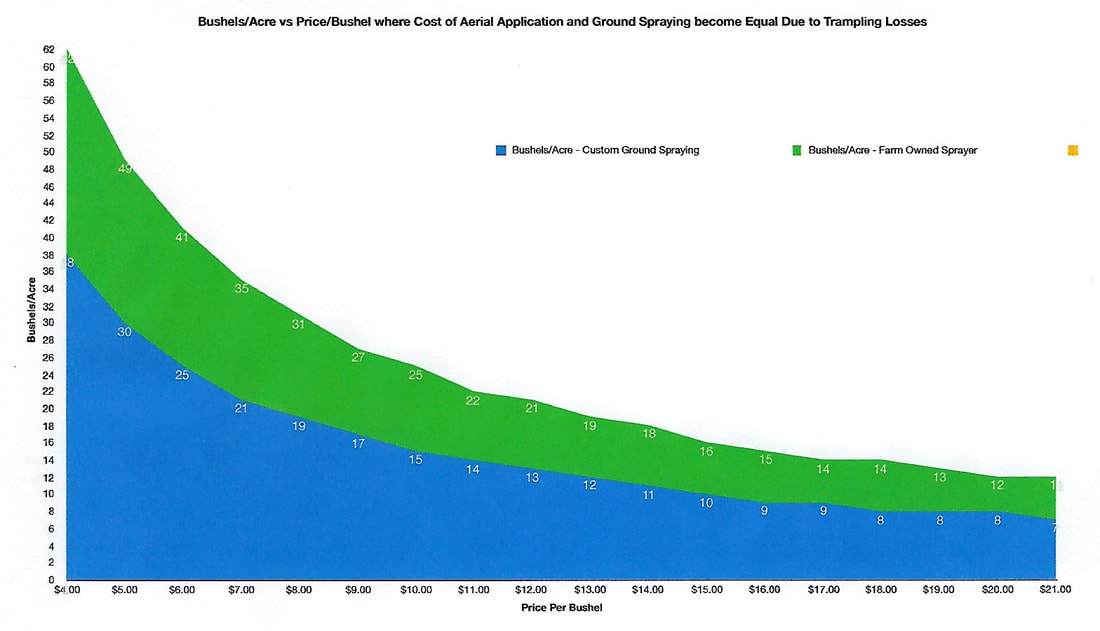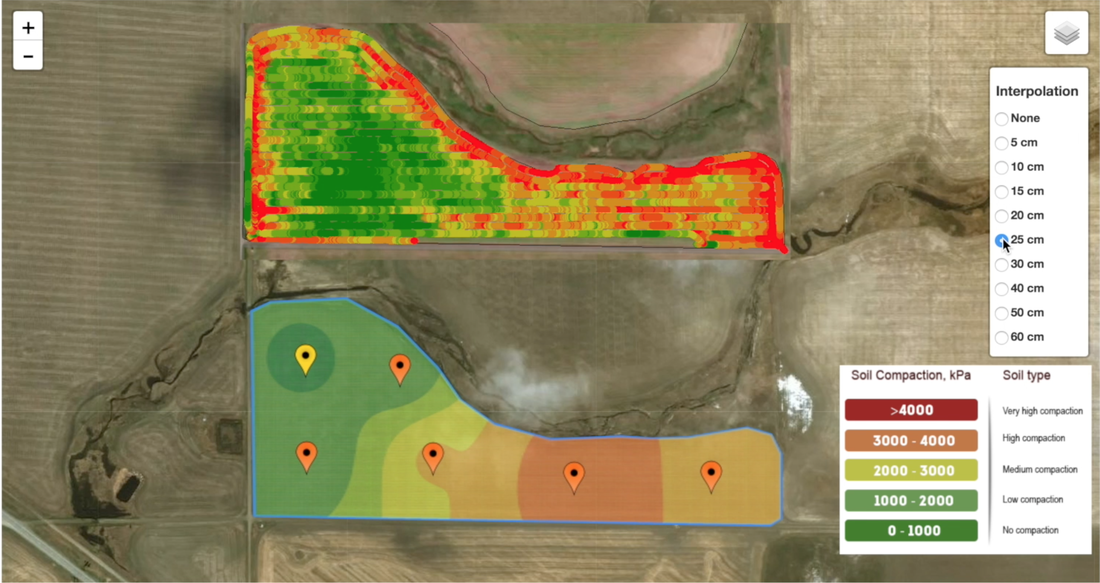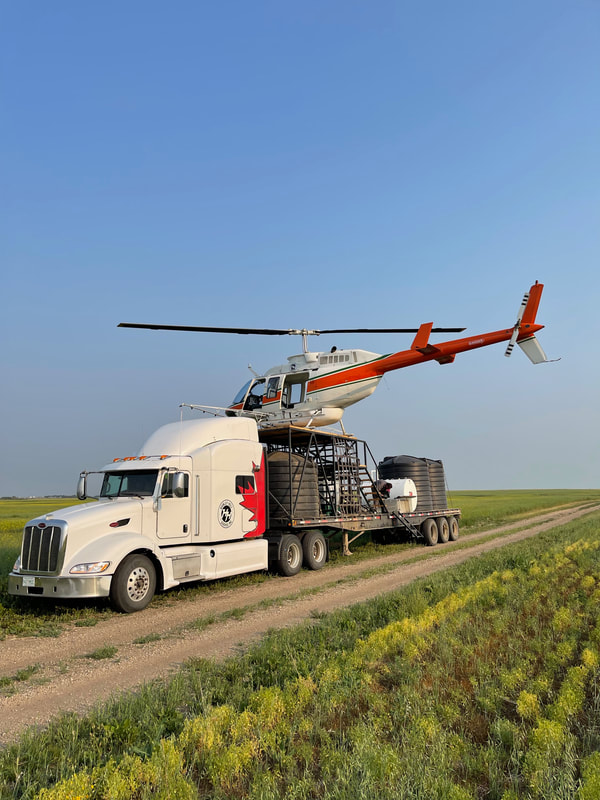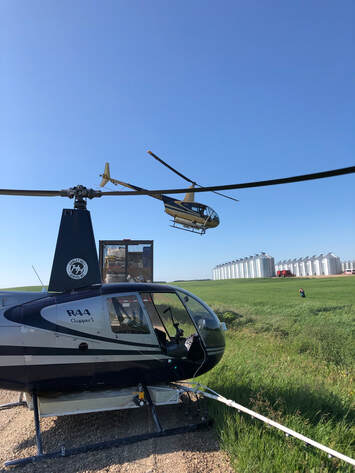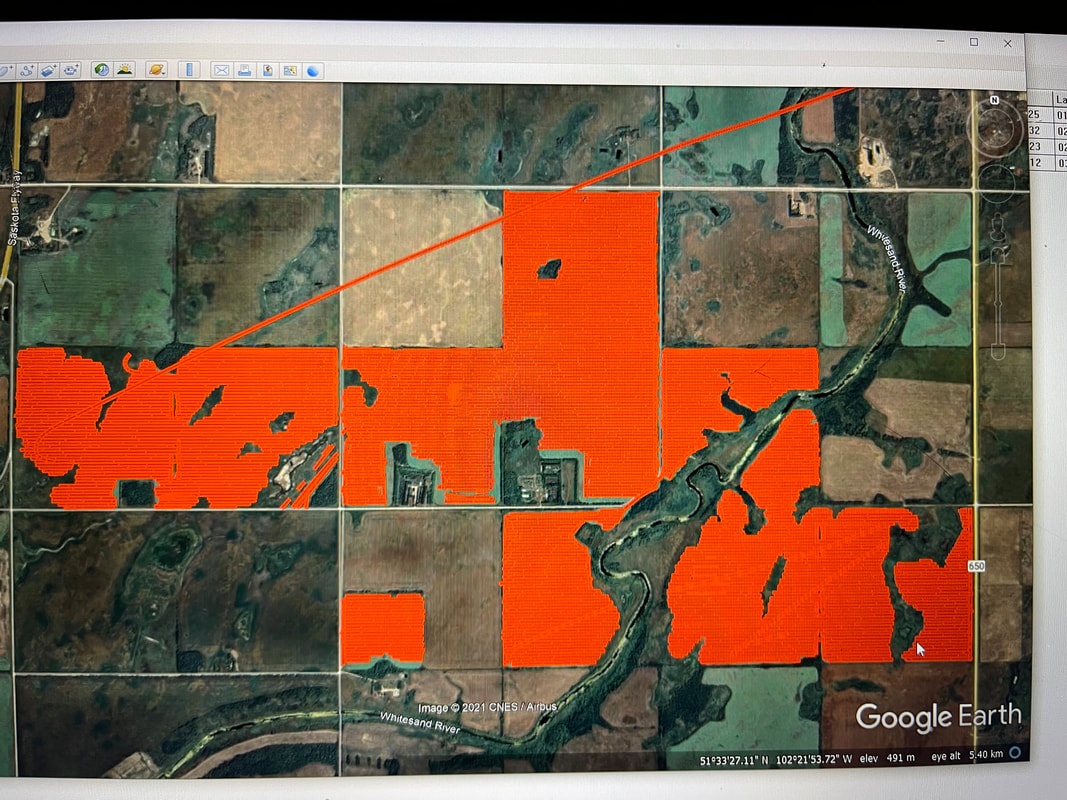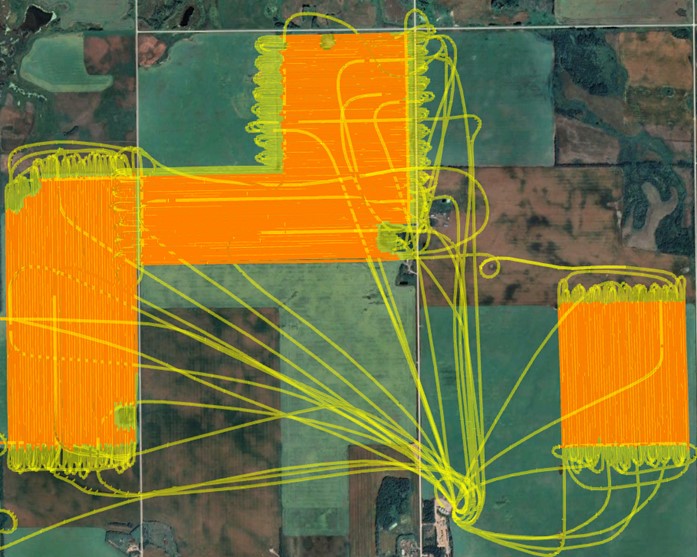Aerial Application
Hanley Heli specializes in aerial application. We are aerial applicators that utilize helicopters, not a helicopter operator who also performs aerial application. All crew members are knowledgable in agriculture and aviation. We test and calibrate regularly, using a helicopter provides highly effective and precision application of crop protection products. We have both standard hydraulic nozzles as well as rotary atomizers. We can work with you to choose the best droplet size and application rate to meet your needs. We are fully insured for drift and liability.
*2024 Pricing*
$13.25/acre
*Pricing for 2 gal/acre application rate, for 4gal/acre add $2*
*Smaller acre jobs such as fence lines, road allowances, yards/tree rows, pasture/spot spraying - $1250/hr*
Advantages of Aerial Application
- No track damage to your crops, therefore increasing yields. Ground equipment tracking damage averages around 3%, up to 5% when more sloughs/obstacles are present.
- Example 1: 50 Bu Canola @ $10/Bu= $500/acre, ground rig - $6.50/acre + 3% trampling ($15/acre) = $21.50/acre, aerial = $11/acre = $10.50/acre less cost than custom ground application! The Government of Saskatchewan Farm Machinery Guide puts the cost of ownership/fuel/and operator of a 1200us gal ground sprayer @ about $362/hr @ 200 hrs per year or $3.62/acre @ 100 acres/hr plus maintenance. So in the same scenario using your own rig your still $7.62/acre less cost with aerial application than a farm owned sprayer.
- Example 2: 50 Bus wheat @ $6.50/Bus = $325/acre, ground rig-$6.50/acre + 3% trampling ($9.75/acre) = $16.25/acre (or $13.37/acre with your own equipment), aerial = $11/acre = Still $2.37-$5.25 ahead with aerial application.
- Faster, greater daily ground coverage, better use of time. Pesticides often need to be applied during a specific time period. Aerial application has the ability to apply pesticides rapidly, at the optimum time to get on top of the pest when it counts.
- No soil compaction. Soil compaction caused by ground equipment causes decreased air and water movement through the soil into the root zone, with aerial application the soil crust remains undisturbed saving problems with harvest and seeding due to ruts and trampled straw.
- No crop height limit, the crop is never too big to spray. Late stage application of fungicides, pesticides, fertilizer, or insecticides.
- No direct contact helps prevent spread of disease. Spores are not spread from field to field, broken/damaged plants are more susceptible to disease.
- More environmentally friendly. Aircraft are a very efficient way to apply, burning less fuel than ground rigs.
- Frees up time so you can focus your energy elsewhere. Time is money!
Here's a graph showing the yield/commodity price combo required before aerial application breaks even with ground sprayer application. Anything above the line is more to your bottom line! Keep in mind this does not factor in compaction, harvesting difficulty due to trampled crop, extra time input, etc.
Assumptions:
- Aerial application @ $11.00/Acre
- Custom ground application @ $6.50/Acre
- Farm owned sprayer cost of $3.62/Acre (Government of Saskatchewan Farm Machinery Guide calculated cost of ownership and fuel for a 1200usg sprayer with a $22/hr operator, maintenance not added in)
- Trampling of 3%
- Note: bumps in the graph are due to rounding to the nearest whole number
An example showing the effect that soil compaction can have on yields
Photo courtesy of My Agro soil compaction testing - www.myagro.ca
Helicopter or Fixed wing sprayer
Both types of aircraft have their pros and cons for providing aerial application in the agriculture sector.
- Helicopters can reload off a ground truck on site directly beside the field. This increases spraying time and productivity. Fixed wing aircraft generally carry larger loads and can travel at higher speeds covering acres very quickly but they must fly to a landing strip to reload, increasing ferry time. Application with a helicopter may be an advantage if you live greater than 20km from a landing strip.
- Helicopters have an advantage in small, confined, irregular fields with obstacles such as trees or sloughs. The slower travel speed allows a high level of accuracy, the tighter turning radius helps make up for the travel speed.
- At slower speeds the helicopters rotor wash, which occurs when the rotor blades push the chemicals downwards towards the ground, can help spread the chemicals on the underside of the plants where bugs, fungus etc. are located. This can be of advantage when treating larger treed areas. At higher speeds the large separation between rotor and spray boom mean the spray remains undisturbed before entering the canopy causing a uniform spray pattern with less chance of drift.
- When choosing whether the time is right for application, the helicopter can be on site monitoring temp, wind, dew, etc so there is no guesswork.
Application Guarantee
If required we can provide a google earth image showing exactly where the aircraft was flown and where the booms were activated on your field.
If required we can provide a google earth image showing exactly where the aircraft was flown and where the booms were activated on your field.
Print and fill out form below, then email or fax it back to us. Tyler will phone to confirm your aerial application booking.
| terms_of_service_agreement_aerial_application_pdf.pdf | |
| File Size: | 112 kb |
| File Type: | |
Proudly powered by Weebly
